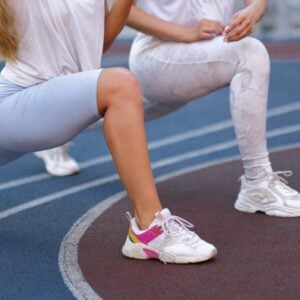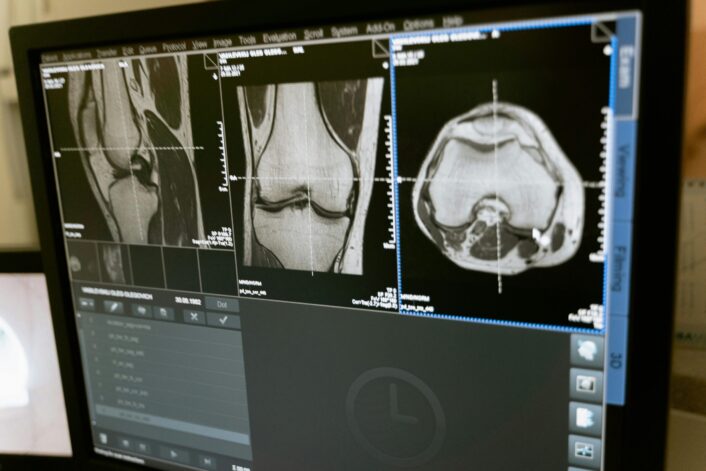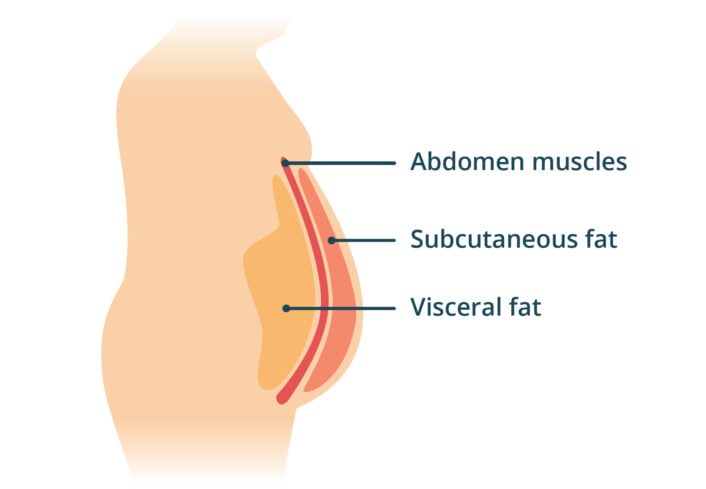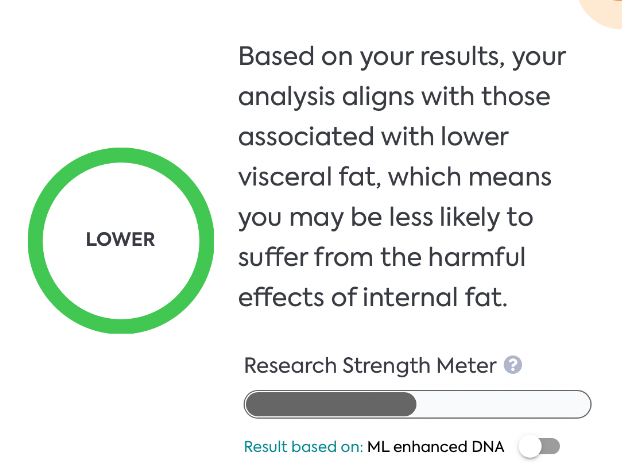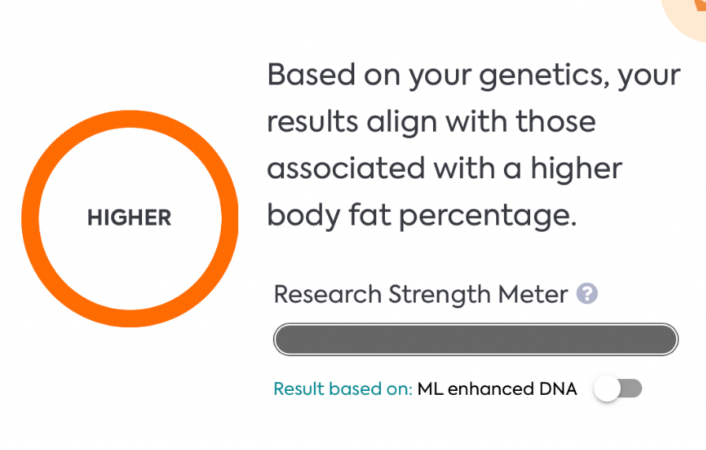Genetic Insights on Anxiety for A Healthier Well-Being
Aira
on
August 13, 2024

Genetic Insights on Anxiety for A Healthier Well-Being
Disclaimer: This article is for informational purposes only and is not intended to diagnose any conditions. LifeDNA does not provide diagnostic services for any conditions mentioned in this or any other article.
Anxiety — that familiar flutter of unease, the racing heartbeat before a big moment — touches many lives in varying degrees. But beyond its palpable effects lies a deeper question: Is anxiety more than just a stress response?
What is Anxiety?
Anxiety is a natural emotional response characterized by feelings of apprehension, worry, or fear in anticipation of potential threats or stressful situations. Scientifically, it involves complex interactions between brain regions, neurotransmitters like serotonin and norepinephrine, and the body’s stress response systems.
When faced with a perceived threat, the brain’s amygdala triggers the release of stress hormones such as cortisol, preparing the body to react swiftly—a mechanism evolved to enhance survival in dangerous situations.
Genetically, anxiety disorders can be influenced by inherited traits. Studies suggest that certain genes may predispose individuals to heightened anxiety sensitivity or altered responses to stress. Understanding the genetic basis of anxiety not only offers insights into individual differences in stress resilience but also informs personalized approaches to mental health care.
By uncovering these genetic underpinnings, researchers aim to develop targeted therapies that address the root causes of anxiety disorders, potentially improving treatment outcomes and quality of life for those affected.
What are the Symptoms of Anxiety?
Anxiety manifests through a range of physical, emotional, and cognitive symptoms, which can vary in intensity depending on the individual and the specific anxiety disorder. Here are common symptoms supported by scientific understanding:
- Physical Symptoms
- Increased Heart Rate and Breathing: Anxiety triggers the sympathetic nervous system, causing rapid heart rate (tachycardia) and shallow or rapid breathing (hyperventilation).
- Muscle Tension: Persistent anxiety can lead to muscle tightness or tension, often felt in the neck, shoulders, or back.
- Sweating: Excessive sweating, even in non-stressful situations, is a common physical manifestation of anxiety.
- Gastrointestinal Issues: Nervousness or stress can cause digestive discomfort, such as stomachaches, nausea, or diarrhea.
- Emotional Symptoms
- Excessive Worry: Individuals with anxiety disorders often experience persistent and uncontrollable worry about various aspects of their lives, including health, work, or relationships.
- Fear or Panic: Intense feelings of fear or panic can arise suddenly, sometimes without an apparent trigger, leading to panic attacks in certain anxiety disorders like panic disorder.
- Irritability: Anxiety can contribute to irritability or restlessness, affecting interpersonal relationships and daily interactions.
- Cognitive Symptoms
- Difficulty Concentrating: Anxiety can impair concentration and focus, making it challenging to complete tasks or make decisions.
- Negative Thinking: Individuals may experience pessimistic or catastrophic thinking patterns, anticipating the worst outcomes in situations.
- Rumination: Persistent overthinking or dwelling on past events or future uncertainties is common in anxiety disorders like generalized anxiety disorder (GAD).
- Behavioral Symptoms
- Avoidance: In an attempt to mitigate anxiety symptoms, individuals may avoid triggering situations or environments, which can impact daily functioning and quality of life.
- Compulsive Behaviors: Some anxiety disorders, such as obsessive-compulsive disorder (OCD), involve repetitive behaviors or rituals performed to alleviate anxiety or intrusive thoughts.
These symptoms can vary in severity and duration, and their impact on daily life can range from mild discomfort to significant impairment. Understanding these manifestations is crucial for recognizing and addressing anxiety disorders effectively, considering both genetic predispositions and environmental influences in developing personalized treatment strategies.
How is Anxiety Diagnosed?
Anxiety disorders are diagnosed through a comprehensive assessment that considers both clinical criteria and individual symptoms. Here’s how anxiety is typically diagnosed:
- Clinical Interview: A healthcare provider conducts a thorough interview to gather information about the individual’s medical history, current symptoms, and any family history of anxiety disorders. This helps in understanding the context and duration of symptoms.
- Diagnostic Criteria: Anxiety disorders are classified and diagnosed according to criteria outlined in the Diagnostic and Statistical Manual of Mental Disorders (DSM-5), published by the American Psychiatric Association. These criteria specify the presence, frequency, and impact of symptoms necessary for a diagnosis.
- Physical Examination: Although anxiety is primarily a psychological condition, a physical examination may be conducted to rule out any underlying medical conditions that could contribute to symptoms.
- Psychological Assessment: Standardized questionnaires and scales, such as the Generalized Anxiety Disorder 7-item scale (GAD-7) or the Hamilton Anxiety Rating Scale (HAM-A), may be used to assess the severity of anxiety symptoms and monitor treatment progress.
- Differential Diagnosis: Healthcare providers differentiate between different types of anxiety disorders (e.g., generalized anxiety disorder, panic disorder, social anxiety disorder) and other mental health conditions that may present with similar symptoms.
- Collaborative Approach: Diagnosis often involves collaboration between healthcare professionals, such as psychiatrists, psychologists, and primary care physicians, to ensure comprehensive evaluation and appropriate treatment planning.
By following these diagnostic steps, healthcare providers can accurately identify anxiety disorders, consider genetic influences, and develop personalized treatment strategies aimed at improving overall well-being and quality of life for individuals affected by anxiety.
Is Anxiety Genetic?
SLC6A4 and ANK3 Genes
A 2017 study investigated the genetic factors contributing to Social Anxiety Disorder (SAD) in a German sample of 321 patients and 804 controls. Researchers analyzed 24 single-nucleotide polymorphisms (SNPs) to assess their association with SAD and symptom severity.
None of the SNPs showed significant associations with SAD after the Bonferroni correction among the case-control sample. However, two SNPs displayed nominal significance but only the SNP- rs140701 within the serotonin transporter gene SLC6A4 showed an association in the same allelic direction, with its role in anxiety disorders treatable with selective serotonin reuptake inhibitors (SSRIs).
Quantitative analysis of symptom severity identified four SNPs with nominal associations. Notably, rs10994359 near the ANK3 gene showed the strongest correlation (P=0.001) and was also associated with harm avoidance scores.
These findings suggest a role for SLC6A4 in anxiety disorders and indicate potential links between genetic variation near ANK3 and anxiety-related personality traits. The study enhances our understanding of genetic influences on SAD and points to avenues for future research and treatment development.
BDNF
Brain-d neurotrophic factor (BDNF) is vital for neuron survival and synaptic plasticity, and it may play a role in neuropsychiatric disorders. The human BDNF gene has 11 exons and produces different transcripts through alternative promoters and splicing. Most BDNF transcripts are found in both the brain and blood cells. A 2013 study aimed to clarify the inconsistent findings on BDNF levels in anxiety disorders.
Researchers reviewed different studies measuring BDNF protein levels in anxiety disorder patients versus control groups. Eight studies with 1,179 participants were analyzed. Results showed lower BDNF levels in anxiety disorder patients [Standard Mean Difference (SMD) = -0.94, p ≤ 0.05]. However, this varied by the source of BDNF (plasma vs. serum) and the type of anxiety disorder. Plasma BDNF levels were significantly lower (SMD = -1.31, p ≤ 0.01), but serum levels were not (SMD = -1.06, p ≥ 0.01). Notably, OCD patients had significantly lower BDNF levels (SMD = -2.33, p ≤ 0.01), while PTSD patients did not show a significant difference (SMD = -0.05, p ≥ 0.01).
In conclusion, BDNF levels are generally lower in anxiety disorders, particularly OCD, and are influenced by sampling methods. Further research is needed to confirm BDNF’s potential as a biomarker for anxiety disorders.
What are the Types of Anxiety?
Anxiety disorders encompass several distinct types, each characterized by specific symptoms and diagnostic criteria supported by scientific research:
- Generalized Anxiety Disorder (GAD): GAD involves excessive worry and anxiety about various aspects of life, such as work, health, or relationships, lasting for at least six months. Individuals with GAD often experience physical symptoms like muscle tension, restlessness, and difficulty concentrating.
- Panic Disorder: Panic disorder is marked by recurrent panic attacks—sudden episodes of intense fear or discomfort that peak within minutes. Symptoms include palpitations, sweating, trembling, shortness of breath, and a sense of impending doom or loss of control.
- Social Anxiety Disorder (Social Phobia): Social anxiety disorder involves intense fear or anxiety about social situations where individuals may be scrutinized or judged by others. This fear can lead to avoidance of social interactions, impacting daily functioning.
- Specific Phobias: Specific phobias are intense fears of specific objects or situations, such as heights, flying, spiders, or enclosed spaces. Exposure to the phobic stimulus can provoke immediate anxiety or panic.
- Obsessive-Compulsive Disorder (OCD): OCD is characterized by recurrent, intrusive thoughts (obsessions) and repetitive behaviors or mental acts (compulsions) aimed at reducing anxiety or preventing perceived harm. Common obsessions include contamination fears or intrusive thoughts, while compulsions may involve excessive cleaning or checking rituals.
- Post-Traumatic Stress Disorder (PTSD): PTSD can develop after exposure to a traumatic event and involves symptoms such as intrusive memories, flashbacks, hypervigilance, and avoidance of reminders of the trauma.
- Separation Anxiety Disorder: Separation anxiety disorder is more commonly diagnosed in children but can persist into adulthood. It involves excessive anxiety about separation from attachment figures, leading to distress and impairment in daily life.
These anxiety disorders can co-occur with other mental health conditions or exist independently, affecting individuals’ quality of life and requiring tailored treatment approaches that consider both genetic predispositions and environmental factors influencing their onset and severity.
Is Anxiety Considered a Mental Problem?
Anxiety is considered a mental health problem characterized by excessive worry, fear, or apprehension that can significantly impair daily functioning and well-being. Scientifically, anxiety disorders are classified as mental health conditions recognized by diagnostic criteria outlined in the Diagnostic and Statistical Manual of Mental Disorders (DSM-5). These disorders are not simply transient feelings of stress or nervousness but persistent patterns of symptoms that interfere with various aspects of life.
Anxiety disorders affect the brain’s functioning and neurochemistry, involving complex interactions between neurotransmitters, brain regions like the amygdala and prefrontal cortex, and the body’s stress response systems. Genetic factors play a significant role in predisposing individuals to anxiety disorders, influencing their susceptibility and response to stress and fear-inducing stimuli.
Research indicates that anxiety disorders can arise from a combination of genetic predispositions, environmental factors, and life experiences. Effective treatment often involves a combination of therapy, medications targeting neurotransmitter imbalances, and lifestyle modifications to manage symptoms and improve overall mental health.
Recognizing anxiety as a mental health problem underscores the importance of seeking professional help for diagnosis and treatment. Understanding its biological underpinnings helps individuals and healthcare providers develop personalized strategies to mitigate symptoms and enhance quality of life.
What to Avoid When You Have Anxiety?
When managing anxiety, certain lifestyle factors and habits can exacerbate symptoms. Here are recommendations on what to avoid:
- Caffeine and Stimulants: High intake of caffeine found in coffee, tea, and energy drinks can stimulate the nervous system, leading to increased heart rate, restlessness, and exacerbation of anxiety symptoms. Limiting caffeine intake or opting for decaffeinated alternatives may help reduce anxiety.
- Alcohol and Substance Use: Alcohol and recreational drugs can temporarily alleviate anxiety but may worsen symptoms over time. They disrupt neurotransmitter balance and can lead to dependence, withdrawal symptoms, and increased anxiety levels.
- Irregular Sleep Patterns: Poor sleep quality or irregular sleep patterns can negatively impact mood, cognitive function, and overall mental health. Anxiety disorders often co-occur with sleep disturbances, so maintaining a regular sleep schedule and practicing good sleep hygiene is crucial.
- Unhealthy Diet: Highly processed foods, sugary snacks, and excessive consumption of refined carbohydrates can contribute to fluctuations in blood sugar levels, affecting mood stability and energy levels. A balanced diet rich in fruits, vegetables, lean proteins, and whole grains supports overall well-being.
- Isolation and Avoidance: Social isolation and avoidance of triggering situations or activities can perpetuate anxiety symptoms and lead to increased feelings of fear and apprehension. Engaging in social support networks and gradually facing feared situations with support can be beneficial.
- Overthinking and Rumination: Dwelling on negative thoughts or catastrophic scenarios can intensify anxiety. Cognitive-behavioral techniques, such as mindfulness and cognitive restructuring, can help individuals manage and redirect these thought patterns.
- Stressful Environments: Chronic stress from work, relationships, or other sources can exacerbate anxiety symptoms. Implementing stress management techniques, such as relaxation exercises, time management strategies, and setting realistic goals, can help mitigate stress levels.
By avoiding these triggers and adopting healthy coping strategies, individuals can better manage anxiety symptoms, enhance resilience, and improve overall quality of life. Understanding how genetics and lifestyle interact can empower individuals to make informed choices that support mental well-being.
Ways to Lessen Anxiety
Managing anxiety involves a multifaceted approach that integrates scientific insights into genetics, lifestyle adjustments, and evidence-based therapies. Here are effective strategies:
Mindfulness and Relaxation Techniques
Practices such as mindfulness meditation, deep breathing exercises, and progressive muscle relaxation can reduce anxiety by calming the mind and body. These techniques enhance emotional regulation and decrease physiological arousal.
Regular Physical Activity
Exercise has proven benefits for mental health, including anxiety reduction. Physical activity increases endorphin levels, improves sleep quality, and reduces levels of stress hormones like cortisol. Aim for at least 150 minutes of moderate-intensity exercise per week.
Healthy Diet
Consuming a balanced diet rich in fruits, vegetables, whole grains, and lean proteins supports overall well-being. Certain nutrients, like omega-3 fatty acids found in fish and antioxidants in fruits and vegetables, may have protective effects against anxiety.
Limiting Caffeine and Alcohol
High intake of caffeine can exacerbate anxiety symptoms, while alcohol can disrupt sleep and increase feelings of anxiety. Moderation or avoidance of these substances can help manage anxiety more effectively.
Quality Sleep
Establishing a consistent sleep schedule and practicing good sleep hygiene (e.g., avoiding screens before bed, and creating a relaxing bedtime routine) are essential. Poor sleep can exacerbate anxiety symptoms, so prioritizing restful sleep is crucial.
Therapy and Counseling
Cognitive-behavioral therapy (CBT) and other psychotherapeutic approaches are highly effective in treating anxiety disorders. These therapies help individuals identify and modify negative thought patterns and behaviors that contribute to anxiety.
Medication
In some cases, healthcare providers may prescribe medications, such as selective serotonin reuptake inhibitors (SSRIs) or benzodiazepines, to alleviate severe anxiety symptoms. These medications work by balancing neurotransmitters in the brain.
Stress Management
Learning effective stress management techniques, such as time management, setting realistic goals, and practicing assertiveness, can reduce overall stress levels and prevent anxiety triggers.
Social Support
Maintaining strong social connections and seeking support from friends, family, or support groups can provide emotional reassurance and practical assistance in managing anxiety.
Self-Care Practices
Engaging in activities that promote relaxation and enjoyment, such as hobbies, creative pursuits, or spending time in nature, fosters a sense of well-being and reduces anxiety.
By incorporating these strategies into daily life, individuals can effectively manage anxiety symptoms, improve resilience to stressors, and enhance overall mental health. Understanding the interplay between genetics and lifestyle factors empowers individuals to make informed choices that support their well-being and manage anxiety effectively.
LifeDNA’s Personality and Cognition Report
Discover the power of personalized wellness with LifeDNA’s Personality and Cognition Report. This scientifically backed report delves into your unique genetic profile, offering insights that can transform how you understand and optimize your cognitive abilities and personality traits. By uncovering genetic predispositions related to memory, learning, mood regulation, and more, this comprehensive analysis empowers you to make informed choices tailored to your genetic makeup.
LifeDNA’s suite of reports, including Nutrition Report, Sleep Report, Vitamins and Supplements Report, Fitness Report, Wellness Report, and Skincare Report, provides over 200 trait reports designed to enhance every aspect of your well-being. Premium options like the Age-Related Report and Methylation Genes Report offer deeper insights into specific health markers, ensuring a holistic approach to personalized health management.
Start your wellness journey today with LifeDNA and unlock the secrets hidden within your DNA. Take control of your health by understanding your body’s unique needs and optimizing your lifestyle choices based on cutting-edge genetic science. Visit LifeDNA to explore our plans and embark on a path to a healthier, more vibrant life.
References
- https://www.psychiatry.org/patients-families/anxiety-disorders/what-are-anxiety-disorders#:~:text=Anxiety%20refers%20to%20anticipation%20of,or%20leaving%20to%20escape%20danger.
- https://my.clevelandclinic.org/health/articles/22572-serotonin#:~:text=Serotonin%20plays%20several%20roles%20in,mania%20and%20other%20health%20conditions.
- https://mhanational.org/what-noradrenaline#:~:text=Noradrenaline%20(also%20called%20%22norepinephrine%22,brings%20on%20symptoms%20of%20depression.
- https://www.ncbi.nlm.nih.gov/pmc/articles/PMC3424606/
- https://www.who.int/news-room/fact-sheets/detail/anxiety-disorders
- https://www.psychiatry.org/news-room/apa-blogs/rumination-a-cycle-of-negative-thinking
- https://www.helpguide.org/articles/anxiety/obssessive-compulsive-disorder-ocd.htm
- https://nyulangone.org/conditions/anxiety-disorders/diagnosis#:~:text=To%20diagnose%20an%20anxiety%20disorder,any%20medications%20you%20are%20taking.
- https://headspace.org.au/professionals-and-educators/health-professionals/resources/anxiety-assessment/#:~:text=There%20are%20several%20assessment%20tools,%2DBOCS)%20(5).
- https://www.nimh.nih.gov/health/topics/anxiety-disorders
- https://www.nimh.nih.gov/health/topics/obsessive-compulsive-disorder-ocd
- https://www.psychiatry.org/psychiatrists/practice/dsm
- https://www.webmd.com/depression/ss/slideshow-avoid-foods-anxiety-depression
- https://thestoryexchange.org/6-ways-to-manage-stress-for-mental-health-awareness-month/?gclid=CjwKCAjw7c2pBhAZEiwA88pOF-KN52KywZXCp8lwUNidiHZ8hk2dXRrCn8dwmWjj2sWRtXq3sz9rzRoCXvIQAvD_BwE&gad_source=1&gclid=CjwKCAjwkJm0BhBxEiwAwT1AXPy3qC976twLERtxZxPX3yj5JudFFbR0fSNos3Ya5zbFgxiH2UoiXRoCIWMQAvD_BwE
- https://www.webmd.com/depression/ssris-myths-and-facts-about-antidepressants
